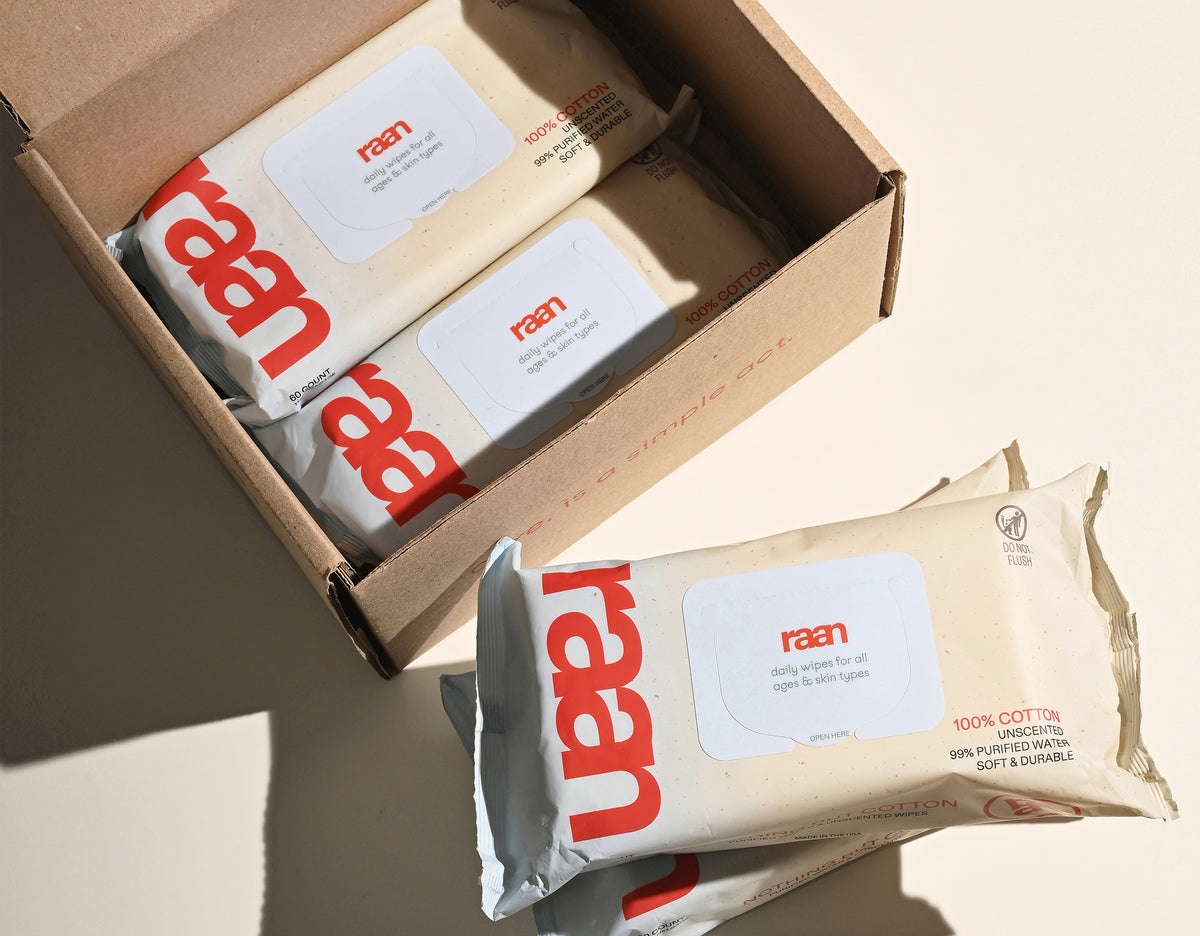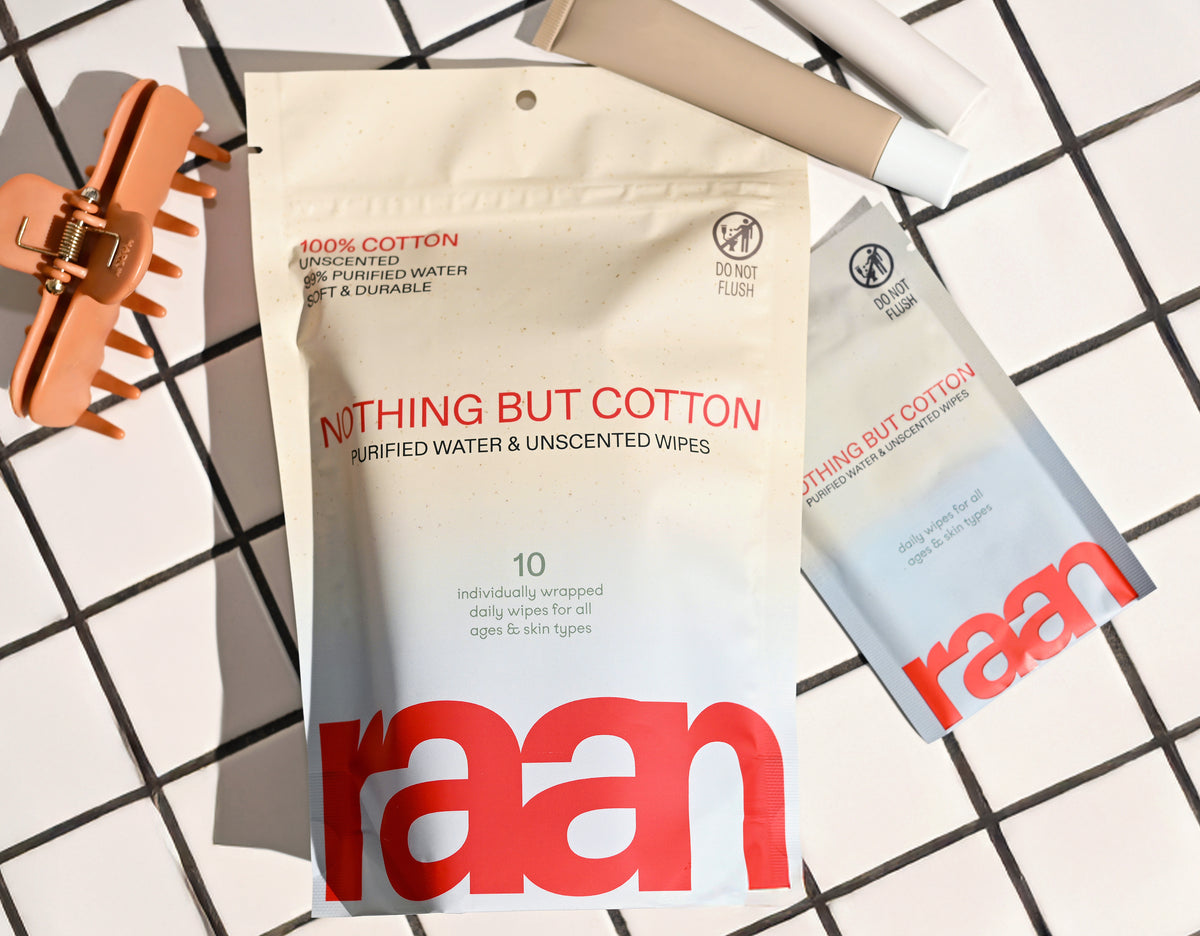Key Takeaways
- Newborn bath time essentials focus on safety and simplicity rather than aesthetics.
- Using the right products helps reduce stress for both parents and babies during bath time.
- A newborn's skin is thinner and more permeable, requiring careful product selection.
- Prioritizing gentle and thoughtful choices is essential for protecting delicate newborn skin.
Table of Contents
- Bath Time, Simplified for Newborns
- What Are Newborn Bath Time Essentials?
- Why Gentle Products Are Non-Negotiable
- How Often Should You Bathe a Newborn?
- Setting Up a Safe Bathing Environment
- Essential Bathing Tools, Broken Down
- Safe & Gentle Bathing: Complete Step-by-Step Guide
- Solutions for Common Bath Time Challenges
- Smart Product Choices: Key Comparisons
- Top Newborn Bathing Products for Safe, Gentle Care
- Creating the Perfect Newborn Bathing Environment
- Building Sustainable Bathing Habits
Bath Time, Simplified for Newborns
Newborn bath time essentials aren't about creating picture-perfect moments—they're about safety, simplicity, and a little less stress for everyone involved. Your newborn's skin is uniquely vulnerable, thinner and more permeable than older children's, making thoughtful product choices genuinely matter.
Whether you're a first-time parent navigating overwhelming product labels or a sensitive-skin caretaker seeking transparency, the truth is refreshingly simple: less truly is more. The right essentials focus on gentle materials, minimal ingredients, and honest functionality over marketing hype.
We'll walk through what you actually need, what you can skip, and why ingredient clarity makes all the difference when caring for delicate newborn skin.
What Are Newborn Bath Time Essentials?

True newborn bath time essentials focus on safety and gentleness, not convenience features. Your core needs are straightforward: a safe bathing space, gentle cleansing tools, and minimal-ingredient products that won't irritate delicate skin.
Must-Have Essentials
- Safe bathing surface: Baby bath tub, sink insert, or clean kitchen sink
- Gentle cleansing tools: Soft washcloths or unbleached cotton wipes
- Mild cleansing products: Water-based wipes or minimal-ingredient cleansers
- Temperature monitoring: Bath thermometer or reliable elbow test
- Post-bath care: Soft hooded towel, clean diaper, fresh clothes
Helpful But Optional
Secondary items like rinse cups, soft baby brushes, and age-appropriate bath toys can enhance the experience but aren't necessary for safe, effective bathing. Focus on the fundamentals first.
Why Gentle Products Are Non-Negotiable
The Science of Sensitive Skin
Newborn skin is significantly thinner and more permeable than adult skin, making it prone to dryness, irritation, and allergic reactions. This vulnerability means every product that touches your baby's skin matters—from the fibers in washcloths to the preservatives in cleansing wipes.
Harsh cleansers, synthetic fragrances, and microplastics found in typical wipes can disrupt the skin's natural barrier. That's why "mild" and "fragrance-free" aren't just nice-to-haves—they're essential for preventing irritation and supporting healthy skin development.
What Ingredient Transparency Actually Looks Like
Real transparency means knowing exactly what touches your baby's skin. Raan wipes contain just five EWG-verified ingredients: 99% purified water, organic aloe for moisture, ethylhexylglycerin for skin conditioning, and food-grade preservatives sodium benzoate and potassium sorbate for safety.
What's notably absent: plastic fibers, synthetic preservatives, artificial fragrances, and bleach. This unbleached, 100% cotton approach eliminates common irritants while maintaining the gentle effectiveness newborns need.
For more on the benefits of unbleached cotton in baby care, see our in-depth guide.
How Often Should You Bathe a Newborn?
Newborns don't need daily baths—in fact, over-bathing can dry out their delicate skin. The recommended frequency is 2-3 times per week for full baths, with spot-cleaning as needed between sessions.
For everyday messes—spit-up, diaper leaks, or milk residue—gentle wipes or soft washcloths with plain water work effectively without stripping natural skin oils. This approach maintains cleanliness while protecting the skin's developing barrier function.
Save full baths for when they're truly needed, and embrace the simplicity of targeted cleaning for daily maintenance.
Setting Up a Safe Bathing Environment

Choosing Your Bathing Spot
Kitchen sinks work perfectly for newborns—they're the right size, easy on your back, and simple to sanitize. Baby bath tubs offer longer usability but require more storage space. Bath seats provide hands-free support but need careful attention to weight limits and stability.
Safety essentials include non-slip surfaces, keeping all supplies within arm's reach, and never leaving your baby unattended—even for seconds.
Temperature and Room Prep
The ideal newborn bath temperature ranges from 98-100°F (37-38°C)—slightly cooler than adult preference. Test with a reliable thermometer or the inside of your wrist, which is more sensitive than your hand.
Warm the room beforehand to prevent chills, and have post-bath essentials ready: hooded towel, fresh diaper, clean clothes, and a cozy blanket for immediate warmth.
Essential Bathing Tools, Broken Down
Bathing Surfaces
| Option | Best Age Range | Back Comfort | Storage Needs | Setup Time |
|---|---|---|---|---|
| Kitchen Sink | Newborn-3 months | Excellent | None | Minimal |
| Baby Bath Tub | Birth-12+ months | Good | Moderate | Quick |
| Bath Seat | 6+ months | Fair | Minimal | Quick |
Towels and Washcloths
Soft, unbleached cotton or muslin materials are gentlest on newborn skin. Hooded towels provide superior heat retention and coverage compared to regular towels, making post-bath transitions smoother and warmer.
Maintain softness by washing with fragrance-free detergent and avoiding fabric softeners that can create buildup. Air-drying when possible helps preserve the natural cotton fibers and extends the lifespan of your towels.
Cleansing Products: When Less Is More
Most newborns need minimal cleansing beyond warm water for their first few weeks. When you do need gentle cleaning power, newborn bath time essentials should include products with transparent, minimal ingredient lists. Look for items free from synthetic fragrances, harsh preservatives, and plastic fibers that can irritate delicate skin.
Raan wipes offer an ideal middle ground—made from unbleached, 100% cotton with just five EWG-verified ingredients including 99% purified water and organic aloe. They provide gentle cleansing without the residue or over-processing that comes with conventional options, making them perfect for face, hands, and diaper changes without multiple products.
Safety Items: Essential Protection
A few targeted safety items can transform bath time from stressful to secure. Non-slip bath mats prevent slipping in full-size tubs, while soft faucet covers protect against accidental bumps. Bath kneelers aren't just comfort items—they help you maintain proper positioning and reduce back strain during longer bathing sessions.
Keep safety items minimal but functional. A simple bath thermometer eliminates guesswork around water temperature, while having a clean rinse cup within reach prevents awkward stretching while supporting your baby.
Safe & Gentle Bathing: Complete Step-by-Step Guide
Pre-Bath Preparation
Successful bath time starts before water touches skin. Gather all essentials within arm's reach: towels, wipes, clean diaper, fresh clothes, and any cleansing products you plan to use. Set your room temperature slightly warmer than usual—newborns lose body heat quickly when wet.
Check water temperature using a thermometer or the inside of your wrist (should feel warm, not hot). Fill your baby bath tub with just 2-3 inches of water—enough to keep baby warm without creating safety risks. Lay out post-bath items in the order you'll need them.
During Bath: Proper Technique
Support your baby's head and neck with your non-dominant arm, keeping your hand under their armpit for security. Start with the face using a clean wipe or damp washcloth—work from inner to outer corners of eyes, then nose and mouth areas. This prevents spreading any bacteria from dirtier areas.
Wash the body next, paying attention to creases where milk or moisture can accumulate. Use gentle, patting motions rather than scrubbing. Save hair for last since the head loses heat fastest—a quick, gentle wash with water is usually sufficient for newborns who have minimal hair.
Post-Bath Care
Immediately wrap your baby in a warm, hooded towel and pat—never rub—skin dry. Focus on thorough drying in skin folds where moisture can cause irritation. Apply moisturizer only if skin appears dry, choosing fragrance-free, hypoallergenic options.
Quick diaper and clothing changes help maintain body temperature. Keep the room warm for several minutes after bathing to prevent chills, and consider skin-to-skin contact for additional warmth and bonding.
Solutions for Common Bath Time Challenges

When Baby Cries During Bath
Crying during baths often signals temperature discomfort or feeling insecure. Try shorter bathing sessions—5 minutes can be plenty for newborns. Keep a warm, damp washcloth over baby's chest and belly during bathing to maintain warmth and provide comfort.
Gentle talking, soft singing, or quiet music can provide distraction and reassurance. Some babies respond well to having a small amount of warm water gently poured over their body throughout the bath to maintain consistent temperature.
Addressing Dry or Irritated Skin
Reduce bathing frequency to 2-3 times per week if you notice dryness or irritation. Between full baths, use unbleached cotton wipes for spot cleaning—they provide effective cleansing without stripping natural skin oils or leaving residue that can cause further irritation.
Switch to shorter bath times and avoid any products with synthetic fragrances or harsh preservatives. If irritation persists despite gentle products and reduced frequency, consult your pediatrician to rule out conditions like eczema or allergic reactions.
Managing Cradle Cap
Cradle cap responds well to gentle care rather than aggressive treatment. Use a soft-bristled brush or clean washcloth to very gently massage the scalp during bath time. Avoid picking or scrubbing at flakes, which can cause irritation or minor infections.
A small amount of natural oil (coconut or olive oil) can help soften stubborn scales, but use sparingly and rinse gently. Many cases resolve naturally within a few months with consistent, gentle care.
Smart Product Choices: Key Comparisons
| Feature | Infant Bathing Tub | Kitchen Sink | Regular Bathtub |
|---|---|---|---|
| Age Range | 0-6 months | 0-3 months | 3+ months |
| Water Control | Excellent | Good | Requires more water |
| Back Comfort | Good with stand | Excellent height | Requires kneeling |
| Storage Space | Moderate | None needed | None needed |
| Setup Time | Quick | Fastest | Longest |
Wipes vs. Washcloths for Gentle Cleaning
Traditional washcloths require separate cleansing products, water, and often soap, creating potential for mess and ingredient buildup. Unbleached, 100% cotton wipes streamline the process with pre-moistened, gentle cleaning that requires no additional products. For newborn bath time essentials, this simplicity reduces skin exposure to unnecessary ingredients while maintaining thorough cleansing.
| Feature | Cotton Wipes | Traditional Washcloths |
|---|---|---|
| Ingredients | Pre-formulated, EWG verified | Requires separate cleanser |
| Mess Factor | Contained, no dripping | Water spillage common |
| Skin Contact | Single gentle pass | Multiple rinse cycles needed |
| Travel Ready | Instant use anywhere | Requires water source |
Learn more about soft wipes for newborn skincare and why they are a gentle alternative to traditional washcloths.
Top Newborn Bathing Products for Safe, Gentle Care
The best newborn bath time essentials prioritize ingredient transparency, material safety, and real-world functionality. These recommendations focus on products that deliver gentle effectiveness without unnecessary complexity or harsh additives.
Raan Cotton Wipes - Multi-Purpose Gentle Cleansing
Best for: Face, body, and diaper area cleaning with complete ingredient transparency
Made from unbleached, 100% cotton with just five EWG-verified ingredients, these wipes eliminate the guesswork from newborn care. The 99% purified water base with organic aloe provides effective cleansing without synthetic preservatives, fragrances, or plastic fibers that can irritate delicate skin.
For a deeper dive into what makes a product EWG verified, check out our blog post.
Key Advantage: Food-grade preservatives (sodium benzoate and potassium sorbate) offer safety comparable to baby food ingredients, while ethylhexylglycerin provides natural skin conditioning.
Infant Bath Tubs with Ergonomic Support
Best for: Newborns who need secure positioning during water baths
Look for tubs with built-in head and back support, non-slip bottoms, and easy-drain features. Avoid models with unnecessary electronic components or complex mechanisms that complicate cleaning and maintenance.
For more information on safe bathing practices, see this authoritative guide on bathing your newborn.
Hooded Cotton Towels for Temperature Control
Best for: Maintaining warmth during and after bath time
Choose towels made from unbleached, organic cotton to match the gentleness of quality wipes. The hood design prevents heat loss through the head, which is critical for newborn temperature regulation.
Digital Bath Thermometers for Precision
Best for: Accurate newborn bath temperature monitoring
Digital models provide precise readings between 98-100°F (37-38°C), the optimal range for newborn comfort and safety. Choose waterproof designs with large, easy-to-read displays for quick verification.
Creating the Perfect Newborn Bathing Environment

Beyond products, the bathing environment significantly impacts your newborn's comfort and safety. Small adjustments to room conditions and setup can transform bath time from stressful to soothing.
Temperature and Humidity Control
Maintain room temperature between 75-80°F to prevent chills when baby exits the water. Close windows and doors to eliminate drafts, and consider running a space heater briefly before bath time in cooler months.
Gentle Lighting Setup
Soft, warm lighting reduces overstimulation while providing adequate visibility for safe handling. Avoid harsh overhead lights that can cause squinting or discomfort during the vulnerable bathing process.
Strategic Product Placement
Position all newborn bath time essentials within arm's reach before beginning. This includes wipes, towels, fresh diaper, and clothing. Never leave a newborn unattended to retrieve forgotten items.
Building Sustainable Bathing Habits
Establishing consistent, gentle practices during the newborn period creates a foundation for healthy skin care routines as your child grows. Focus on simplicity and safety over elaborate rituals.
Optimal Bathing Schedule
Two to three full baths per week suffice for most newborns, with spot cleaning using gentle wipes for daily maintenance. This frequency prevents over-drying while maintaining cleanliness and comfort.
Preparing for Growth Stages
The same newborn bath time essentials that work initially—particularly gentle wipes and unbleached cotton towels—will continue to support your child's skin as they grow. As your baby becomes more active, you can gradually introduce additional products as needed, always prioritizing ingredient transparency and skin safety.
Frequently Asked Questions
What are the essential items needed for a safe and gentle newborn bath?
Essential items include a safe bathing surface like a baby tub or clean sink, soft washcloths or unbleached cotton wipes for gentle cleansing, mild, minimal-ingredient products free of fragrances, a way to monitor water temperature, and a soft hooded towel for drying. These basics focus on safety and simplicity to protect delicate newborn skin.
Why is it important to use gentle, fragrance-free products on a newborn's skin?
Newborn skin is thinner and more permeable, making it more vulnerable to irritation and sensitivity. Gentle, fragrance-free products reduce the risk of reactions by avoiding harsh chemicals and unnecessary additives, supporting healthy skin without disrupting its natural barrier.
How can parents create a safe bathing environment for their newborn?
Parents can create a safe environment by ensuring the water temperature is comfortably warm, using a secure and clean bathing surface, keeping all essentials within reach to avoid leaving the baby unattended, and maintaining a calm, stress-free atmosphere. These steps help protect the baby and make bath time smoother for everyone.
How often should a newborn be bathed to protect their delicate skin?
Newborns don’t need daily baths; bathing two to three times a week is usually enough to keep skin clean without drying it out. Between baths, gentle cleansing with water and cotton wipes can help maintain hygiene while preserving the skin’s natural moisture.






